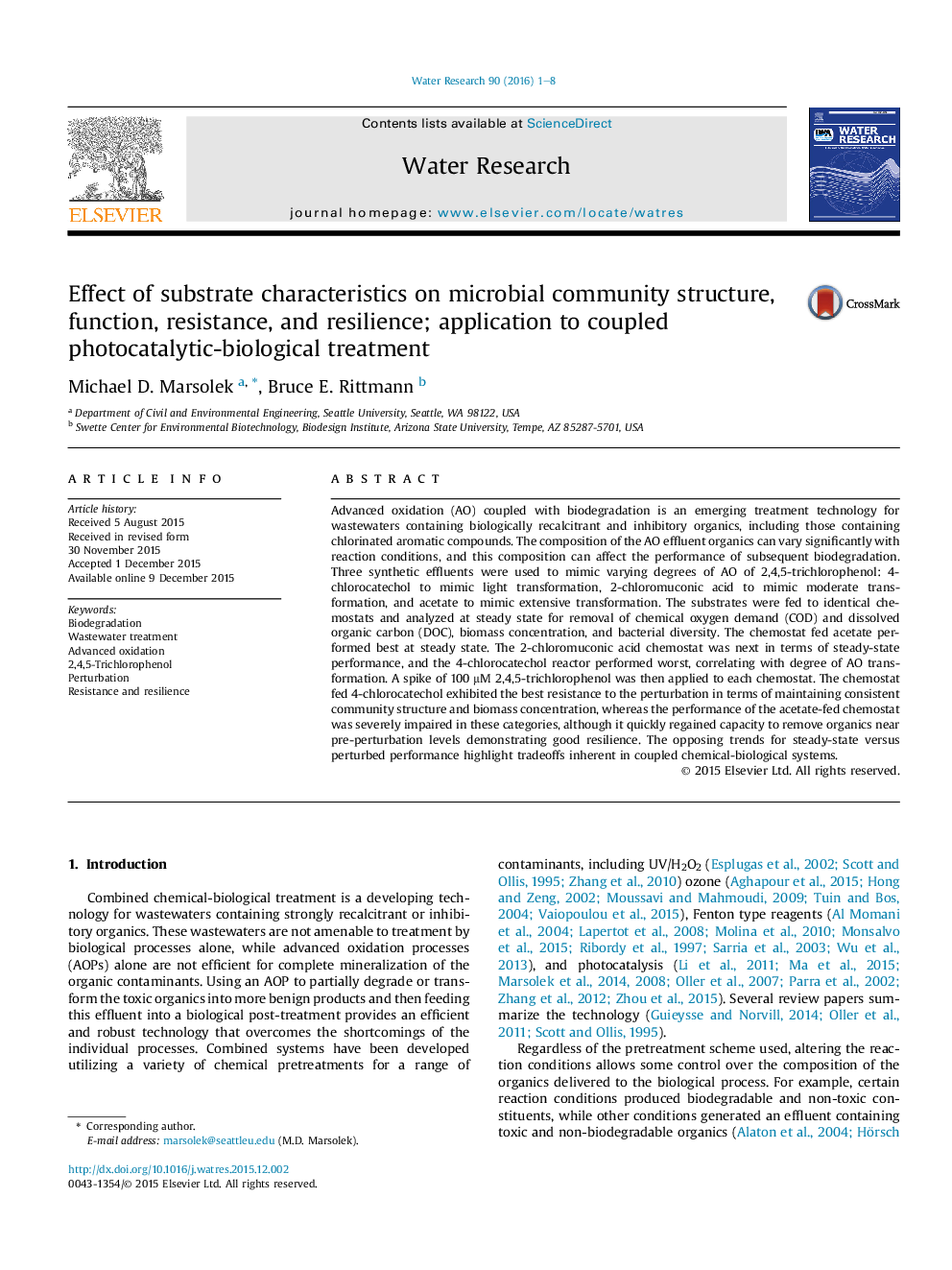| Article ID | Journal | Published Year | Pages | File Type |
|---|---|---|---|---|
| 6365312 | Water Research | 2016 | 8 Pages |
Abstract
Three substrates were chosen to mimic varying degrees of photocatalytic oxidation of 2,4,5- trichlorophenol (TCP): acetate (AC), 2-chloromuconic acid (CMA), and 4-chlorocatechol (4CC). Chemostats fed these substrates were compared at steady-state (a), and after perturbation from a spike addition of 100 μM TCP (b), both in terms of biomass growth and organics removal (shown here for steady state) and community structure (shown here after perturbation). These figures demonstrate the tradeoffs inherent between steady-state performance and resistance to perturbation, with AC performing well at steady-state, but suffering after perturbation by the toxic spike. (OD = optical density, COD = chemical oxygen demand, DOC = dissolved organic carbon, Similarity = measure of changes in microbial community structure)
Keywords
Related Topics
Physical Sciences and Engineering
Earth and Planetary Sciences
Earth-Surface Processes
Authors
Michael D. Marsolek, Bruce E. Rittmann,
